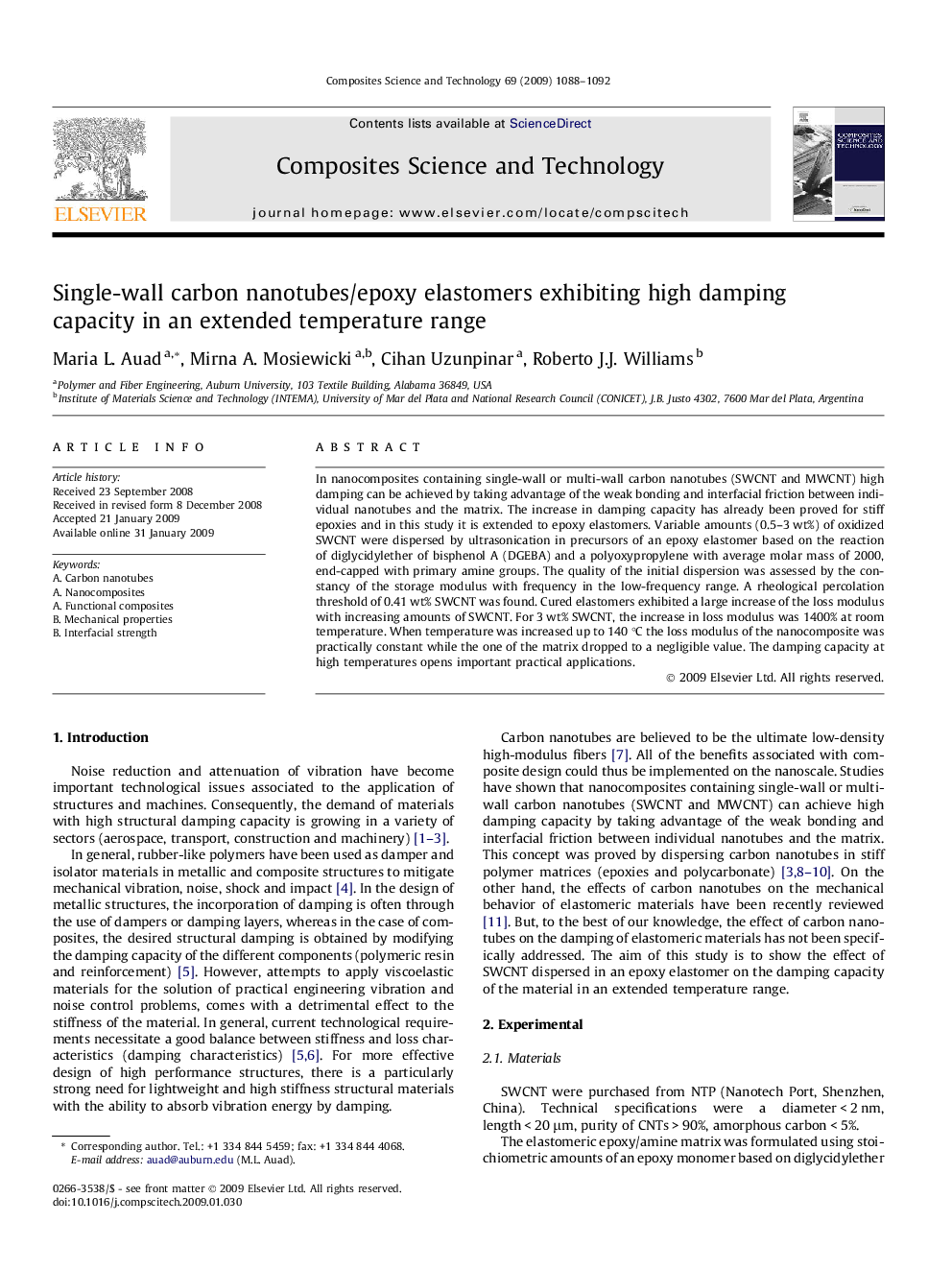| Article ID | Journal | Published Year | Pages | File Type |
|---|---|---|---|---|
| 821854 | Composites Science and Technology | 2009 | 5 Pages |
In nanocomposites containing single-wall or multi-wall carbon nanotubes (SWCNT and MWCNT) high damping can be achieved by taking advantage of the weak bonding and interfacial friction between individual nanotubes and the matrix. The increase in damping capacity has already been proved for stiff epoxies and in this study it is extended to epoxy elastomers. Variable amounts (0.5–3 wt%) of oxidized SWCNT were dispersed by ultrasonication in precursors of an epoxy elastomer based on the reaction of diglycidylether of bisphenol A (DGEBA) and a polyoxypropylene with average molar mass of 2000, end-capped with primary amine groups. The quality of the initial dispersion was assessed by the constancy of the storage modulus with frequency in the low-frequency range. A rheological percolation threshold of 0.41 wt% SWCNT was found. Cured elastomers exhibited a large increase of the loss modulus with increasing amounts of SWCNT. For 3 wt% SWCNT, the increase in loss modulus was 1400% at room temperature. When temperature was increased up to 140 °C the loss modulus of the nanocomposite was practically constant while the one of the matrix dropped to a negligible value. The damping capacity at high temperatures opens important practical applications.
